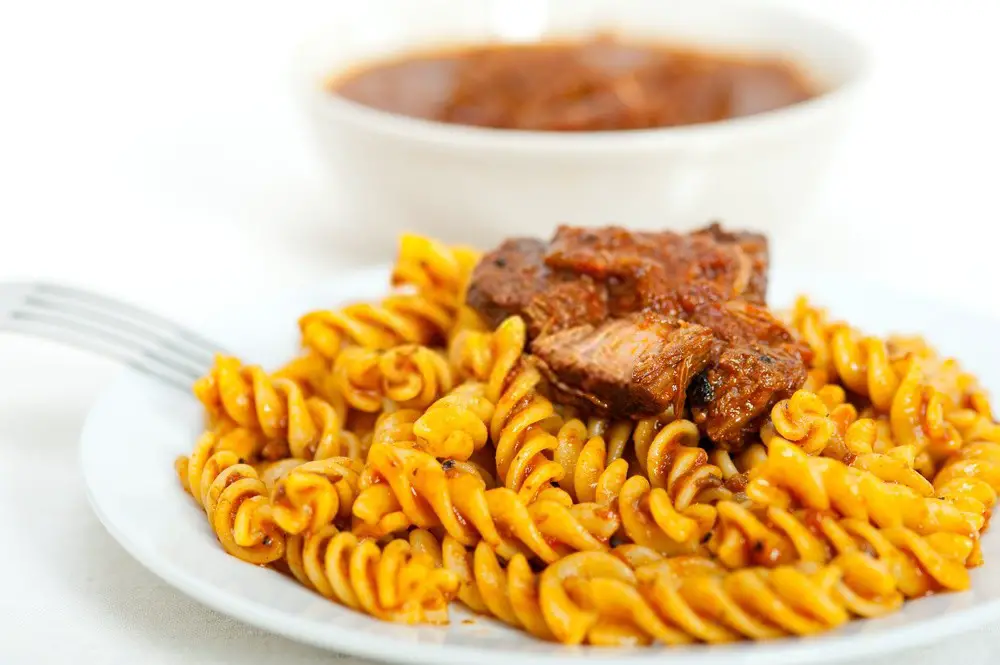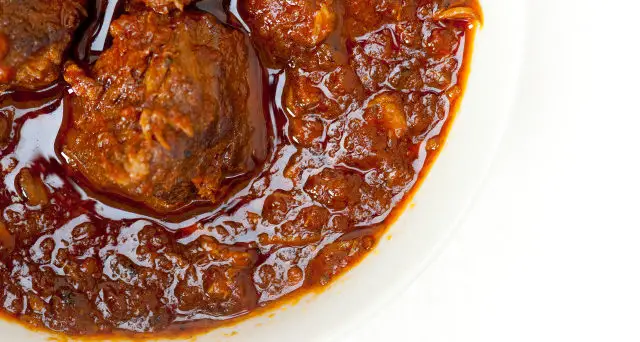How Was The Legend Of The Neapolitan Ragù Born?
How was the legend of the Neapolitan Ragù born?
A popular legend dating from the late 1300 provides us with some unusual cues and background, and allows us to appreciate the divine essence of the Neapolitan Ragù.
In this historical period, in Naples there was a confraternity called the Congregation or Company of the Whites of Justice (Compagnia dei Bianchi della Giustizia), which had the painful task of providing assistance and moral support to those condemned to death, preparing their funerals, organizing memorial Masses and helping poor families.
These men, dressed in long white tunics and a red cross on their chest, went around the city preaching the release of all prisoners, invoking “mercy and peace” from here the name Succurrere Miseris.
The Company of the Whites of Justice stopped in front of the Palace of the Emperor of Constantinople (now Palazzo Filippo D’Angiò in Via Tribunali, the famous arcade) which at the time was inhabited by a selfish and very ruthless nobleman, disliked by all and enemy of all, that’s why so many tried to avoid it and not to cross it on their own way.
One day his wife, a holy woman, always to turn on the hopes of a possible reconciliation of her husband with the citizenship, understood that the only strategy to pity his icy heart was to tempt him by the throat, preparing his favorite dish for him: macaroni. At lunch time, an inexplicable event shook the man.
Divine Providence worked by its nature and filled the plate with a strange red-blooded sauce; to that vision finally, the nobleman’s obstinacy came less, and he was moved in front of that miraculous dish and decided to make peace with all his enemies.
He found the sauce exquisite and very good, irresistible, so much that he decided to call it with the name of his son: Raù, from here onwards Ragù, according to popular legend.
The Neapolitan Ragù is a sauce that has a long secular history and that has undergone many evolutions over time, influenced by customs and dominations, but the taste has always been timeless.
Apart from the “myth” the origin of the name “ragù” is French, from the term ragoût, which once meant all those preparations in which the meat (but also occasionally fish or vegetables) was reduced into small pieces then cooked in stew over low heat for a long time. It is not clear when the term began to be used in Italy, but the “ragù” was already present in the tables of the aristocrats of the Renaissance, initially as a complete dish (as it is still in French cuisine) and only later used to season pasta.

What we know for sure is that the ragù brings together all palates those of adults and children, while we argue only on the question to make or not the “scarpetta”, the sublime art of cleaning with bread the plate dirty of sauce, like an ancient slow and measured ritual.
There is also a poetic tribute to the Ragù, in the famous poem «’ O ‘rraù» by Eduardo De Filippo (one of the most famous Neapolitan actor) with clear references to his play, the comedy note Saturday, Sunday and Monday of 1959:
‘O rraù
‘O rraù ca me piace a me
m’ ‘o ffaceva sulo mammà.
A che m’aggio spusato a te,
ne parlammo pè ne parlà.
Io nun songo difficultuso;
ma luvàmmel’ ‘a miezo st’uso
Sì,va buono: cumme vuò tu.
Mò ce avéssem’ appiccecà?
Tu che dice? Chest’ ‘è rraù?
E io m’ ‘o mmagno pè m’ ‘o mangià…
M’ ‘ a faja dicere na parola?…
Chesta è carne c’ ‘ a pummarola.
If you want learn how to prepare the perfect Neapolitan Ragù follow the Authentic Neapolitan Ragù Recipe (click here!).


